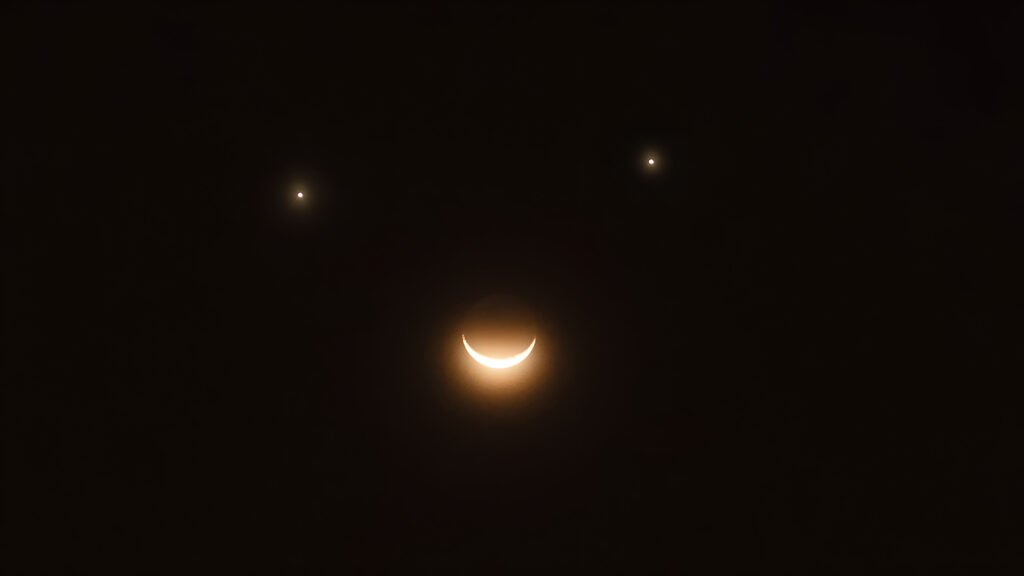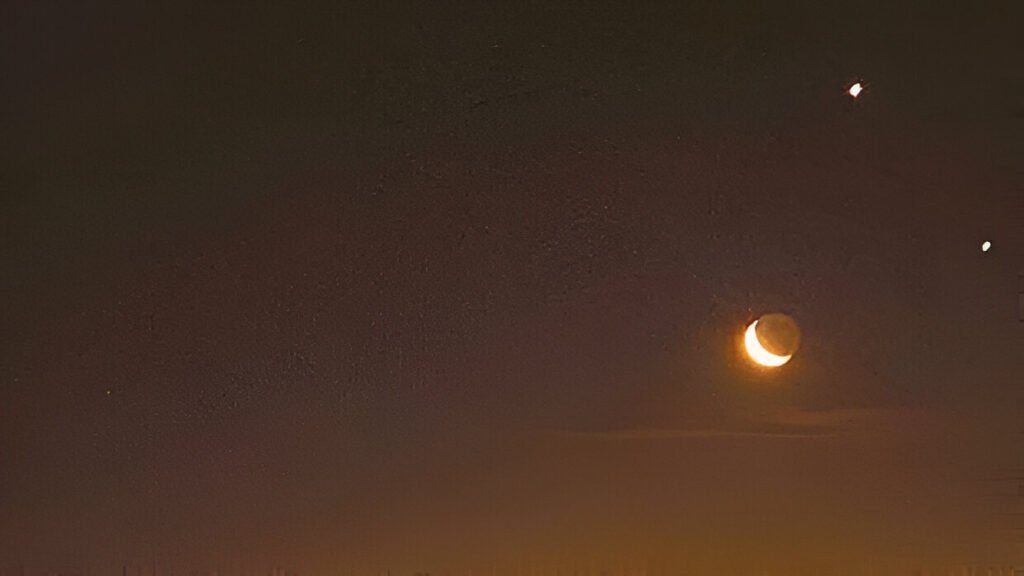
The world is set to witness a rare celestial event on April 25 as Venus, Saturn, and the crescent moon will align in the early morning sky to form a ‘smiley face’.
The Sky is About to Smile Back at Us
On the morning of April 25, 2025, stargazers across the globe will be in for a rare cosmic treat — a planetary alignment that forms a giant smiley face in the sky. If you’re someone who finds joy in skywatching, this quirky and beautiful moment is definitely one to mark on your calendar.
This unusual alignment involves Venus, Saturn, and a slim crescent moon, coming together in the pre-dawn sky in a way that resembles a smiling face. While it’s purely a visual coincidence, the event has sparked excitement among amateur astronomers and casual viewers alike — and for good reason. It’s rare, fleeting, and a little bit magical.
How the ‘Smiley Face’ Alignment Works
This isn’t just a random occurrence. What’s happening is a triple conjunction — a relatively uncommon phenomenon where three celestial bodies appear close together in Earth’s sky. In this case:
- Venus and Saturn will act as the “eyes”
- The crescent moon will curve beneath them like a grin
From our point of view here on Earth, this creates a near-perfect celestial smile. The alignment will be visible in the eastern sky, just before sunrise, around 5:30 a.m. local time — though timing may vary slightly depending on your region.
A Look Back: When the Sky Last Smiled
Interestingly, this isn’t the first time a planetary smile has graced our skies. A similar event took place in December 2008, when Jupiter, Venus, and the moon lined up to form a smiley face visible over parts of the Southern Hemisphere. For those who missed it back then — or weren’t paying attention — this April’s event is a second chance to catch a similar spectacle.
These alignments don’t happen often, and when they do, they usually last just a short window of time. That’s what makes them so special — and why skywatchers rush to set their alarms and head outside.

Tips to View It Best
To make the most of this rare moment, keep a few things in mind:
- Be early: Try to be in place by 5:00 a.m. so you’re ready by the time the sky begins to brighten.
- Face east: The alignment will occur just above the eastern horizon.
- Choose your spot wisely: A high point or an area with a clear view of the horizon (away from trees or buildings) will give you the best vantage.
- No gear needed — but it helps: The event is visible to the naked eye, but binoculars or a telescope can make it even more impressive.
- Check your weather app: A clear sky is crucial. Even a bit of morning cloud cover could block your view.
Why Do Alignments Like This Matter?
Sure, it’s fun to look at. But these events are also a reminder of how precise and interconnected our solar system really is. Each orbit, tilt, and angle lines up in such a way that — for just a brief moment — we see a cosmic smile looking back at us.
They also serve as great entry points into astronomy education, especially for younger audiences or first-time observers. A smile in the sky is the kind of thing that sticks with people — and might just spark a lifelong curiosity about space.
Don’t Forget to Snap a Pic
If you’re a photography enthusiast, this is the perfect chance to capture something unforgettable. Set up a tripod, prep your zoom lens, and experiment with longer exposures just before sunrise. You might also catch some beautiful color gradients in the sky that morning — deep blues and soft oranges that only pre-dawn can offer.
Be sure to tag local astronomy clubs or share your images online — these moments become even more special when shared.
A Wholesome Moment in a Busy World
At a time when the world can feel hectic and overwhelming, looking up to see a literal smile in the sky feels like the kind of quiet joy we all need. So whether you’re a seasoned astronomer or just someone who likes the poetry of the universe, this one’s for you.
Don’t miss it. The universe doesn’t smile often — but when it does, you’ll want to be looking.









